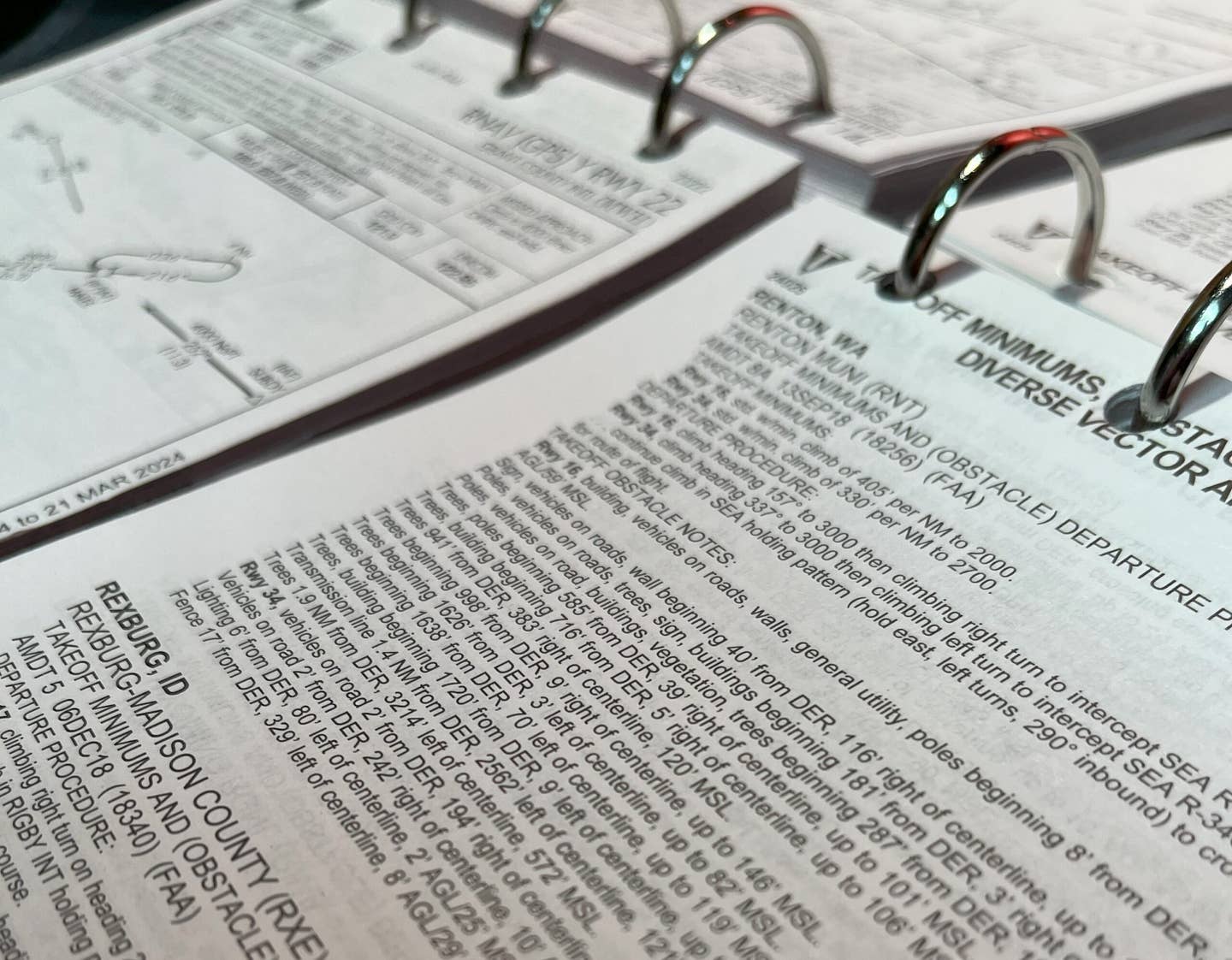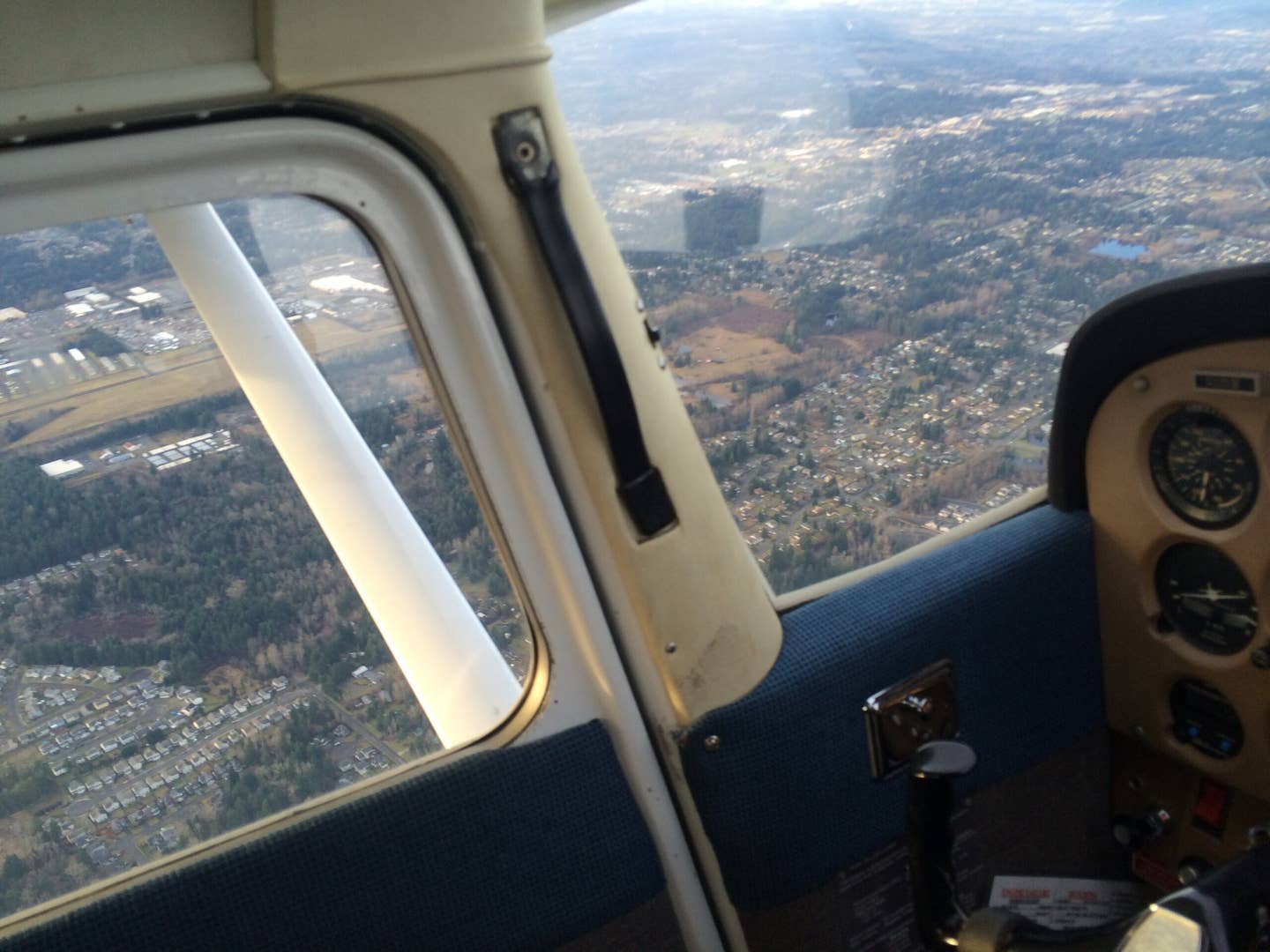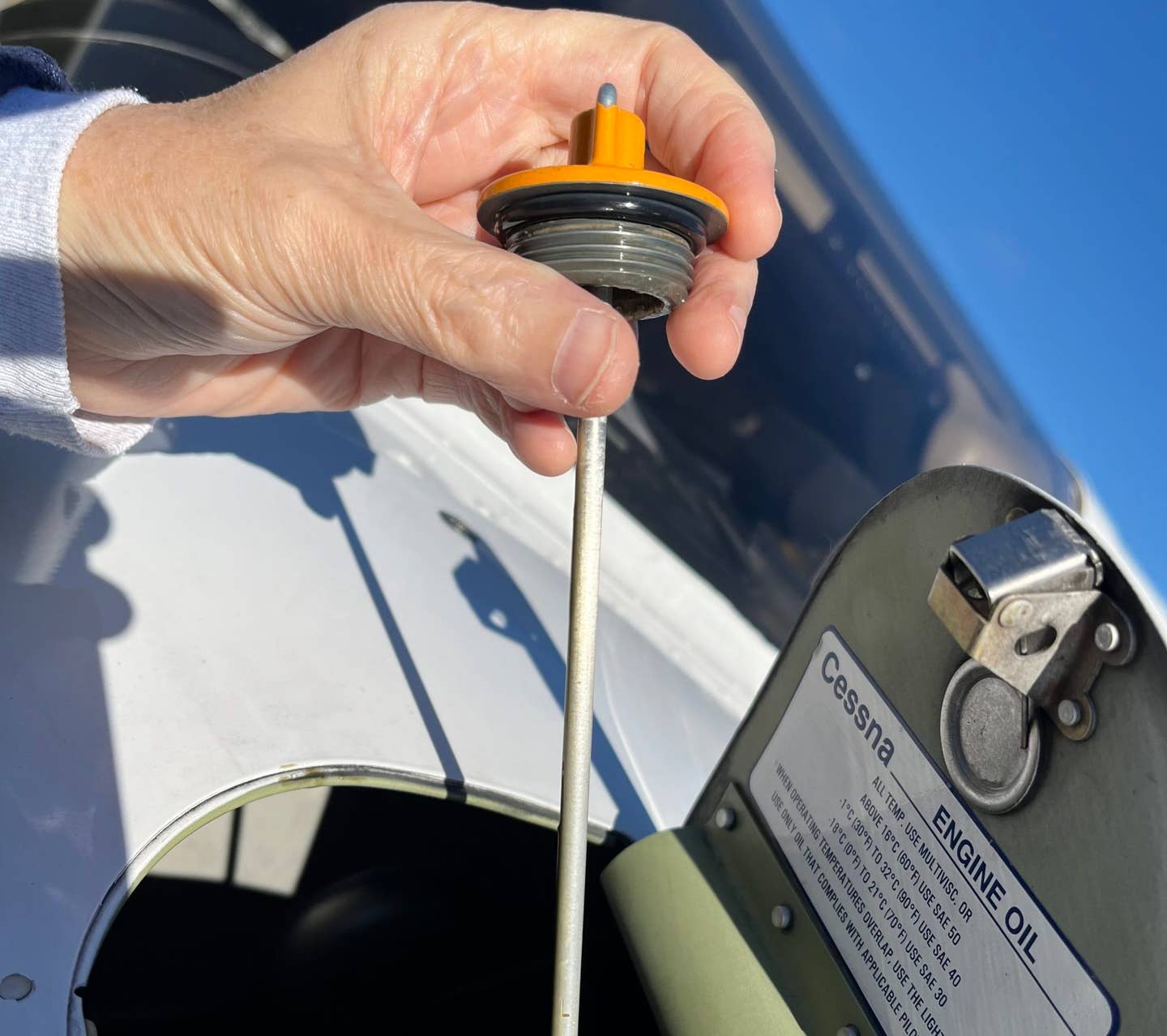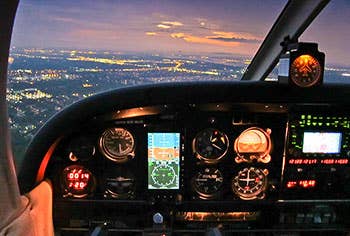What to Consider When Choosing Instrument Approach Plates
National Ocean Service and Jeppesen offer the same information but in different presentations.

National Ocean Service (NOS) binder. [Courtesy: Meg Godlewski]
Before electronic flight bags became as obsequious as Starbucks, pilots relied upon paper charts for information, especially in the IFR environment.
There were two choices for instrument approach plates: the government-printed National Ocean Service (NOS), or Jeppesen. Every fledgling instrument candidate had to choose which they would use.
I learned to fly IFR using NOS products. As I recall, it was the cost of the Jeppesen charts subscription combined with the fact my ex-U.S. Air Force instructor—who said he “cut his teeth” on NOS—that made me lean toward the latter.
It was the 1990s and everything was still on paper. There were tactile as well as visual differences between Jeppesen and NOS. The first thing a fledgling instrument pilot noticed was that the paper used for the Jeppesen products was lighter and felt more delicate than the NOS plates, which are printed on newsprint.
In 2000, Jeppesen Sanderson Inc. was acquired by the Boeing Company, and Jeppesen continues to be the industry standard for commercial aviation. According to my professional pilot friends, their employers pick up the cost of the subscription. The cost varies, depending on how much geographic coverage you seek.
If you use both NOS and Jeppesen—and many pilots do—you will notice similarities between the two, as well as subtle differences.
The graphics are similar, but slightly different, so you will want to study before you take the aircraft into the soup. If you are seeking to become “bilingual,” it’s helpful to get an approach you know well and compare Jeppesen and NOS side by side.
These are just a few things you will want to keep in mind:
Take It From the Top
Jeppesen approach plates have a briefing strip at the top that spells out the most pertinent information an instrument pilot needs. That information includes the name and the identifier of the airport, the expiration date of the plate, if the airport has category A, B, and C approaches, and what kind of approach it is (VOR DME, in bold letters, for example).
Beneath this are several rows of rectangular boxes with the radio frequencies, navigational aid used for the approach, final approach course, altitude for glideslope intercept, MDA or DH, and airport elevation. Missed approach procedures are spelled out, and there are a few lines of notes specific to the airport.
The NOS plate is arranged with the name of the airport and type of approach on the top right, with the navigational aid and final approach course on the top left along with elevation of the airport, touchdown zone, and runway. NOS also has a “T” in a black triangle to let the pilot know there are obstacles to be avoided during takeoff, and conversely an “A” in a black triangle to give similar warnings about the approach.You will have to flip through the binder to find the page that has this information.
The NOS binder, if hard copy, can be bulky. I learned to divide mine into A-N, then have another binder for M-Z.
The Jeppesen plates have more detail on them and more bold type to indicate the fixes that define the approach. The course the aircraft is supposed to fly is depicted by a heavy dark line and an arrow.
The NOS charts also have an arrow line, but the line is thinner. Also, the airport diagram with the field elevation appears on the lower right side of the page, along with information about the type of lighting in use.
Both plates use a segmented arrow to depict the missed approach procedure.
As NOS are used extensively by the U.S. military, you’ll find notes for these pilots in parenthesis on the plates, as well.
NOS also has “shelf life” information printed on the side. For example on the VOR/DME-A for Gillespie County Airport (T82) in Fredericksburg, Texas, it reads “05 Sep 2004 to 3 Oct 2024.”
Electronic Versus Paper
You will likely find it challenging to find a pilot outside the training environment who still uses paper charts. It’s much easier to store charts digitally in a tablet than it is to carry a binder—or in some instances, a suitcase—of charts with you in the cockpit. You have probably seen those large suitcase flight bags pilots used to carry to accommodate their approach plates.
At the flight school level, it can behoove you to know both Jeppesen and NOS, as the more skills you have, the more employable you are.

Sign-up for newsletters & special offers!
Get the latest FLYING stories & special offers delivered directly to your inbox






